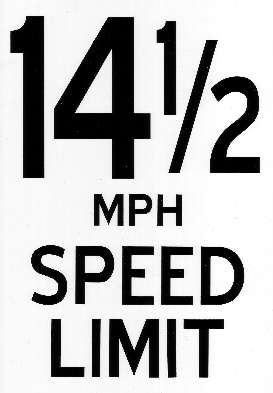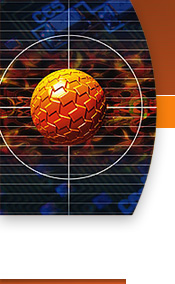Confuse and Distract Your Customers
Distraction, confusion and disruption techniques have been used in various fields for many years.
They are some of the most important techniques for inducing a hypnotic trance into a subject.
Let's look at the psychology, physiology and multiple applications of these techniques.
A confused person has their conscious mind busy and occupied, and is very much inclined to
tap into their subconscious mind to try and make sense of the situation. This act of keeping the
conscious mind busy (focusing on the confusion) so the subconscious can be activated puts the
confused person into a trance-like state of their own making. When someone puts themselves into
a trance state, they go there very easily and without any resistance. Lowering resistance in
your customers is the number one goal for you to achieve that sale, get their cooperation, have
them buy more, and/or get their compliance. Think of a couple professions that are noted for using
confusion techniques to get compliance within their customers. How about car salesmen and
police interrogations? Let's examine this subject in more detail.
Confusion can be induced by many means, some of which may be; using ambiguous words, complex or
endless sentences, mixing opposing subjects, misspeaking, speaking fast, and pattern interruptions
to name a few. The psychological term for this is Transderivational Searches - vague suggestions
are used and a person must process intensely (conscious/subconscious) to find their own meanings to
the situation. These techniques are used in many persuasion scenarios as a way of destabilizing the
other person. Here is a practical example:
What would happen in your mind if you were driving in your car and came across a roadside sign that
said the following - Water Over Road When Raining? Isn't that saying the same
thing as the signs we see all the time that reads - Slippery When Wet? The Water Over Road
When Raining sign will induce the confusion technique into your mind because it is not the
normal sign that we see all the time - that unexpected element draws our attention to that 'out of
the ordinary' sign. It would make our mind go DUH, yeah there is water over the road when it rains
and when that happens the road gets slippery; SO if it is raining I better slow down because I could
slip on the wet road. Versus, the Slippery When Wet sign that we see all the time and
mainly ignore because it is a common occurrence. The first sign is so out of the ordinary from what
we normally see, that it induces the confusion technique, trance state, and causes the distraction
and mental disruption process that we comply by slowing down when there is water present because our
subconscious mind tells us it will be slippery and we could get into an accident.
A few other ways to induce confusion are:
- Breaking Logical Patterns - When we repeat patterns of events it helps us to predict future
events, makes us feel good, and gives us a sense of control. When patterns are disrupted we become
uncertain and that uncertainty leads to a state of mental confusion.
- Losing Control - One of our deep human needs is to understand and control the world around us.
If we understand a situation, then we can predict what will happen next, which in turn gives us a
sense of control and a feeling of being safe. When we cannot make sense of a situation, we feel
confused and scared which leads us to seek a way of getting out of the situation. Typically a
salesman will give their confused customer that way out - "by signing this contract, you will have
many years of enjoyment and worry-free driving with this new car."
- An Unexpected Surprise - When we logically predict a process of events, we mentally set-up
future expectations. When the expectation does not meet our initial prediction, we become surprised
and confused and have to stop to figure out what is happening.
- Stress - Increasing stress leads to a point when we go from seeking the BEST solution to the
problem at hand to seeking ANY solution just to reduce the stress. The psychological term for this
process is called Satisficing. Why do many people admit to a crime in a police interrogation when
they in fact never committed anything? Because of this point - just admit to anything to get out of
the stressful interrogation process.
Confusion techniques work best when you utilize everyday experiences that are familiar to everyone.
Here are some specific examples that you can adapt to your individual business situations:
- I heard a radio ad the other day when I was in Detroit that was promoting an oriental rug cleaning company that referred to themselves as a rug cleaning SPA. Now the 'spa' is so out of the ordinary for a carpet cleaning business that it actually works to induce the techniques listed above.
- At the grocery store the other day, the mini packages of carrots were advertised as 3 for $5, instead of just saying $1.67 each. What does that do? It causes your customers to buy 3 packages instead of just 1 because they are confused that they must not be able to buy just one, they are on a special sale of 3 for the $5 - thus increasing your sale! You get a $5 sale instead of a $1.67 sale (It didn't work on me because I knew what they were doing. I still only bought one package and it rung up for $1.67).
- How about advertising a special at your store - Buy 10 get 2 free! Isn't that really a 20% discount? That would sure draw people's attention because no one lists a 20% discount in those terms. Watch your sales increase because people will buy the 10 and not think about asking for 20% discount if they just buy 3 instead of the 10. This is a great way to move outdated or overstocked merchandise.
- A local charity was recently having a bake sale and had a sign - Half cakes 50cents. They're delicious! They sold out of them in record time over the rest of the bake goods. Why? Because what is a half cake? They are delicious and they must be different because no one sells half cakes. The half cake designation induced the distraction technique (a half cake is nothing more than a cupcake).
- Group A said - "I'm selling these 8 note cards for a local charity for $3. It's a bargain."
Group B said - "I'm selling these 8 note cards for a local charity, the price is 300 pennies, that's
$3. It's a bargain." Which group, just due to wording, induced the confusion technique and sold
the most packages of note cards? If you guessed Group B, you are correct. Group A sold 35% and
Group B sold 65%.
See how powerful this can be for your business scenario?
These confusion techniques work just as well in written advertisements as they do the spoken word.
They help you break through the inertia and lower the resistance (reluctance to buy) within your
customers. A person's resistance is always part of every sales and persuasion equation. There are
many written and unwritten rules pertaining to conversation and interpersonal communication. People
expect you to follow those rules; but if you break them, they quickly become confused and at that
point their resistance is lowered and you (the master salesperson) can then get them to comply with
your desired outcome.
My favorite practical example of this confusion, distraction, disruption process is the street
sign below that was placed in a school zone where they had problems reminding people to slow down.
Look at the graphic below. Based on what you have just learned, do you think it worked to slow down
traffic? You bet it did!

|
> Home
|


